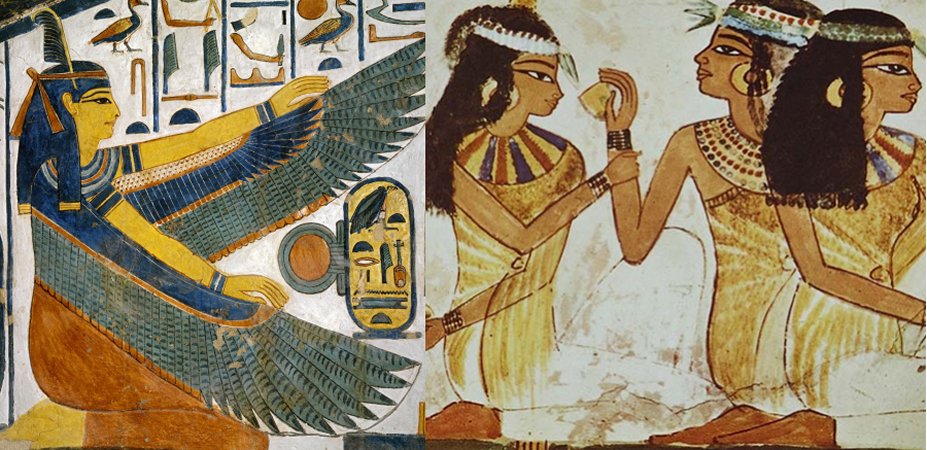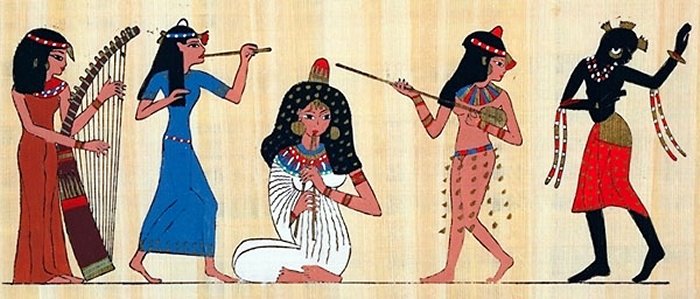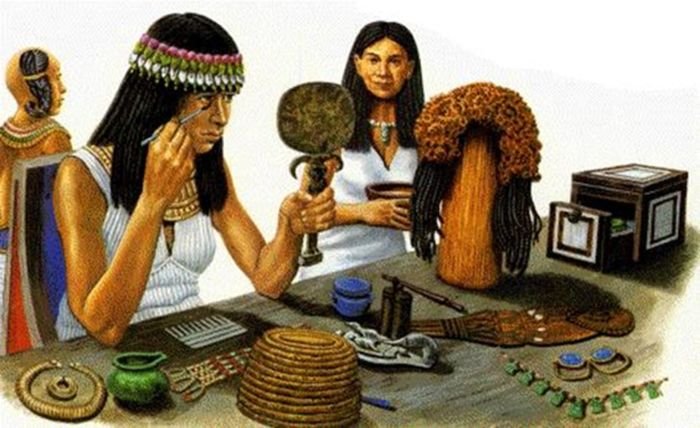Ancient Egyptian Women Had Equal Rights As Men – Egyptian Cosmology And Goddess Maat Reveal Why
Ellen Lloyd - AncientPages.com - When ancient Greek historian Herodotus (484–c. 425 BC) visited Egypt, he was shocked to see how women behaved. Unlike women in ancient Greece, Egyptian females had the same rights as men. They worked, received the same pay rations as men, got drunk, and could become powerful rulers.
Such behavior was completely unacceptable in ancient Greece where women had no rights at all and had to obey the man, who was master of the house.
Ancient Greek women had to receive permission from the man to leave the house’s female quarters. The situation for females in ancient Egypt was much different. In the land of the pyramids, it was not unusual that women spend their days visiting markets and shopping, while their husbands stayed at home doing ordinary housework.
Ancient Egyptian Cosmology And Goddess Maat
Women in ancient Egypt had equal rights as men for thousands of years, but why did their living conditions differ so much from women who lived in neighboring countries?
The answer to this question can be found in Egyptian mythology and ancient Egyptians’ cosmological beliefs.
In ancient Egypt, people worshipped Maat (Ma’at), goddess of truth, balance, and order. Her name, literally, meant ‘truth’ in Egyptian and she was a symbol of harmony. Egyptians believed that without her existence, the universe would become chaos, once again.
As previously mentioned in Ancient Pages, there is a striking similarity between the Ten Commandments and the 42 Principles of Ma’at that appeared at least 2,000 earlier.
The 42 Principles of Ma’at were created so that ancient Egyptians could follow vital rules and act with honor and truth in manners that involve family, the community, the nation, the environment, and the gods.
Goddess Maat. Image credit: blackawakeningmovement.com
Ancient Egyptians viewed the universe as a complete duality of male and female
When the Universe was born there existed a mutual relationship between gods and goddesses. Female gods were just as important as male gods. It was, therefore, necessary to preserve a balance between the gods and people and between the two sexes. Goddess Maat was responsible that this balance was kept.
See also:
Maat – Ancient Egypt’s Most Important Religious Concept
10 Fascinating Facts About Pharaohs
Herodotus believed the Egyptians 'have reversed the ordinary practices of mankind’ and the treatment of women in ancient Egypt caused controversy among other ancient cultures, but the Egyptians kept their laws based on their beliefs.
Divorce, Education, Wills, Inheritance And Same Punishment For Crimes
Egyptian women were allowed to divorce if they were no longer happy with their husbands. Rich Egyptian women could study and get a proper education. This was not possible for women who came from poor families due to financial matters.
Women in ancient Egypt had plenty of rights.
Women and men received the same punishment for the same crime. The property was inherited through the woman's family, and women were able to manage their land, their animals, and their homes themselves. Egyptian females were allowed to make wills and even choose which of their children would inherit.
In another article on Ancient Pages, we discussed the importance of Egyptian makeup. Frescoes discovered in ancient Egyptian temples illustrating daily life reveal men often wore makeup. In fact, it’s almost impossible to find a portrait of an ancient Egyptian whose eyes are not decorated.
The use of cosmetics was vital to men and women in ancient Egypt. Makeup was once an important part of everyday life in Egypt and it was not only used to look better. There was a much more important purpose behind the use of cosmetics in ancient Egypt. Cosmetics was sacred to ancient Egyptians and used not only for aesthetic purposes but rather for magical and religious purposes.
There were no differences between how men and women used makeup.
Pharaoh Hatshepsut and Queen Nefertiti were two famous female rulers in ancient Egypt.
Egyptian women could become powerful pharaohs, but they were naturally challenged by their male rivals. Once a female had become a pharaoh, her duties did not differ from male pharaohs.
A good example of a skillful and efficient female ruler is Pharaoh Hatshepsut, who brought prosperity to ancient Egypt. Another important female ruler was Queen Nefertiti. Why she suddenly disappeared after being elevated to near-equal status by King Akhenaten remains a mystery.
Written by - Ellen Lloyd – AncientPages.com
Copyright © AncientPages.com All rights reserved. This material may not be published, broadcast, rewritten or redistributed in whole or part without the express written permission of AncientPages.com
Expand for referencesMore From Ancient Pages
-
 Connection Between Alpha Draconis And Egyptians Pyramids Revealed
Archaeology | Jan 12, 2020
Connection Between Alpha Draconis And Egyptians Pyramids Revealed
Archaeology | Jan 12, 2020 -
 Ganesha: Elephant-Headed God Of Knowledge, Learning, Literature And Scribe Of The Mahabharata
Featured Stories | Aug 17, 2016
Ganesha: Elephant-Headed God Of Knowledge, Learning, Literature And Scribe Of The Mahabharata
Featured Stories | Aug 17, 2016 -
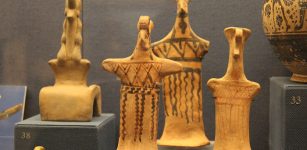 Mycenaean Culture Used Lignite For Their Kilns 3,000 Years Ago – Surprising Discovery Reveals
Archaeology | Jan 25, 2022
Mycenaean Culture Used Lignite For Their Kilns 3,000 Years Ago – Surprising Discovery Reveals
Archaeology | Jan 25, 2022 -
 Beautiful Ancient City Of Polonnaruwa With Hundred Of Tombs, Temples And Statues
Civilizations | Nov 12, 2018
Beautiful Ancient City Of Polonnaruwa With Hundred Of Tombs, Temples And Statues
Civilizations | Nov 12, 2018 -
 Marquis Of Haihun’s Tombs: Dressing Mirror With Confucius’ Portrait Re-Identified
Archaeology | Mar 4, 2017
Marquis Of Haihun’s Tombs: Dressing Mirror With Confucius’ Portrait Re-Identified
Archaeology | Mar 4, 2017 -
 How Early Farmers In Scandinavia Overcame Climate Change
Archaeology | Dec 19, 2023
How Early Farmers In Scandinavia Overcame Climate Change
Archaeology | Dec 19, 2023 -
 Scientists Attempt To Solve An Ancient Greek Volcano Mystery
Archaeology | Sep 20, 2022
Scientists Attempt To Solve An Ancient Greek Volcano Mystery
Archaeology | Sep 20, 2022 -
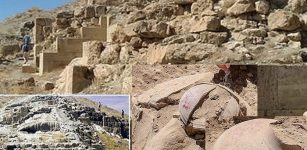 Almost 3,000 Year-Old Burial Site Of Urartian Royals Discovered In Turkey’s Famous Van
Archaeology | Jul 31, 2019
Almost 3,000 Year-Old Burial Site Of Urartian Royals Discovered In Turkey’s Famous Van
Archaeology | Jul 31, 2019 -
 Halloween: Facts And History About All Hallows’ Eve And Its Connection With Samhain – An Ancient Celtic Festival
Ancient Traditions And Customs | Oct 31, 2021
Halloween: Facts And History About All Hallows’ Eve And Its Connection With Samhain – An Ancient Celtic Festival
Ancient Traditions And Customs | Oct 31, 2021 -
 Babylonians And Sumerians Had Advanced Knowledge Of Astronomy
Civilizations | Feb 28, 2017
Babylonians And Sumerians Had Advanced Knowledge Of Astronomy
Civilizations | Feb 28, 2017 -
 Number 13: Coincidence Or Bad Luck – Are We Still Superstitious?
Featured Stories | Dec 9, 2020
Number 13: Coincidence Or Bad Luck – Are We Still Superstitious?
Featured Stories | Dec 9, 2020 -
 Unusual Biblical Cloud – What Was This Perplexing Atmospheric Phenomenon?
Ancient Mysteries | Feb 22, 2019
Unusual Biblical Cloud – What Was This Perplexing Atmospheric Phenomenon?
Ancient Mysteries | Feb 22, 2019 -
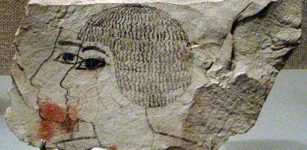 Tomb Of Senenmut And Earliest Known Star Map In Ancient Egypt
Civilizations | Nov 17, 2016
Tomb Of Senenmut And Earliest Known Star Map In Ancient Egypt
Civilizations | Nov 17, 2016 -
 Battle Of Visby – Death Came With King Atterdag’s Ships
Featured Stories | Jul 27, 2022
Battle Of Visby – Death Came With King Atterdag’s Ships
Featured Stories | Jul 27, 2022 -
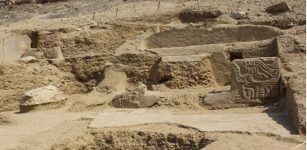 Pre-Inca Temple With Colored Paintings And Carved Sculptures Discovered At The Los Paredones Archaeological Complex, Peru
Archaeology | Jul 8, 2024
Pre-Inca Temple With Colored Paintings And Carved Sculptures Discovered At The Los Paredones Archaeological Complex, Peru
Archaeology | Jul 8, 2024 -
 Ancient European Languages Shed Light On A Great Migration And Weather Vocabulary
Archaeology | Aug 14, 2023
Ancient European Languages Shed Light On A Great Migration And Weather Vocabulary
Archaeology | Aug 14, 2023 -
 Trapped 70,000-Year-Old Artifact Reveals Hidden Information About Early Humans
Archaeology | Dec 5, 2022
Trapped 70,000-Year-Old Artifact Reveals Hidden Information About Early Humans
Archaeology | Dec 5, 2022 -
 Illegal Gold-Hunting Diggers Damaged Sudan’s 2,000-Year-Old Historic Site
Archaeology | Aug 24, 2020
Illegal Gold-Hunting Diggers Damaged Sudan’s 2,000-Year-Old Historic Site
Archaeology | Aug 24, 2020 -
 On This Day In History: Battle Of Dettingen – English Armies Were Victorious Over The French – On June 27, 1743
News | Jun 27, 2016
On This Day In History: Battle Of Dettingen – English Armies Were Victorious Over The French – On June 27, 1743
News | Jun 27, 2016 -
 Giant 4,500-Year-Old Axe Grinding Site Discovered In Scotland
Archaeology | Dec 13, 2022
Giant 4,500-Year-Old Axe Grinding Site Discovered In Scotland
Archaeology | Dec 13, 2022

